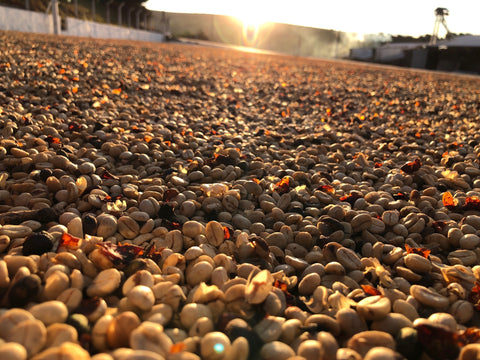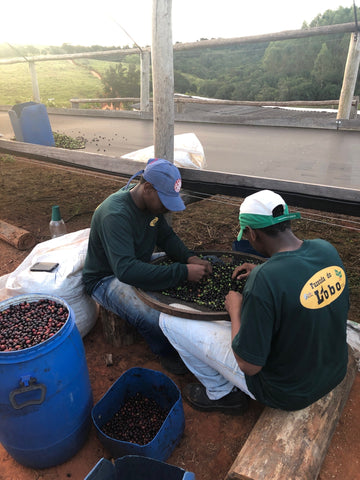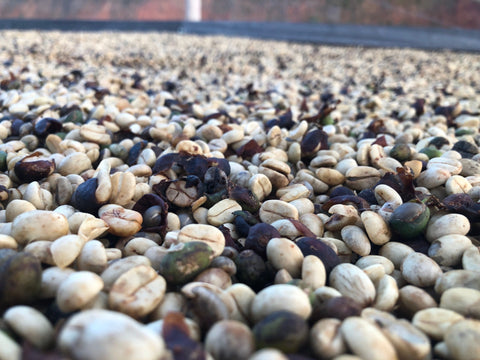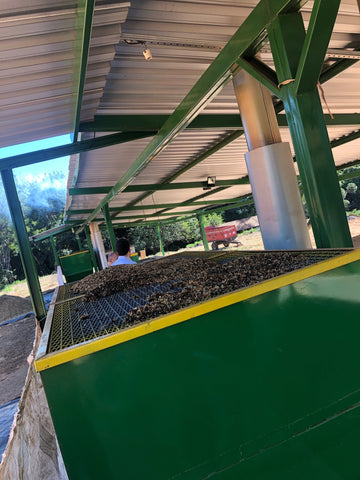
Coffee fermentation.
All coffee undergoes some level of fermentation. However, more attention has recently been paid to the fermentation of coffee during processing, as well as to the use of yeasts to facilitate this process.
To better understand this topic, it is necessary to know what fermentation is.

What is fermentation?
It is a well-known chemical reaction in our food. It is a natural process that converts food components into other compounds, using yeasts, microorganisms and bacteria to break down sugars and starches to create nutrients.
This method takes place after processing, although different types of processing also involve a short fermentation step, which does not influence the fermentation process to any great extent.

How does fermentation influence the quality of coffee?
The way the process is controlled will define the taste of the coffee, if it is not well controlled it can produce a musty, oniony or rancid taste. This is why it is important to keep a strict control and to have a wide knowledge of the process in order to apply the best techniques in this process.
Using good practices over time can contribute to very good coffee flavours.

Control of flavour transfer.
Flavours in coffee vary over the course of fermentation following the different yeasts used in the process, producers can create specific coffee profiles using their skills well, so they can find fruity, exotic, clean and sweet flavours.
By working with different yeasts, we can achieve different flavours, bodies, textures, brightness and even a variety of smells.
Another factor that can contribute to or affect the flavour is the climate, the temperature, the ripeness of the cherry and even the quality of the water used both in the cultivation and in this great process.

Difference between fermented coffee and normal coffee.
It is well known that in natural processes fermentation always occurs, and this fermentation or the degree to which it occurs gives good flavours to the coffee. However, the fermentation process allows the producer to experiment with new flavours due to the meticulous and strict control provided by the different bacteria and yeasts.
Types of coffee fermentation.
The most common are: Alcoholic fermentation and lactic fermentation, but over time many new methods have been discovered.
Alcoholic fermentation: Mostly used for distilled beverages, beer and wine, it is carried out by yeasts that produce ethanol and carbon dioxide.
Lactic fermentation: This involves the production of lactic acid from sugars by lactobacilliacea and enterobacteriacea bacteria, providing flavour and acidity to dairy products, such as meat and cereals, among others.
Propionic fermentation: Here, propionic acid, acetic acid, carbon dioxide and succinic acid work together to form propionic acid, which in most cases is used for cheese.
Cectic fermentation: Transforms ethyl alcohol into acetic acid, or rather, alcohol into vinegar with bacteria of the genus acetobacter.
In this method, empty barrels containing fresh spirits are used, so that the beans absorb degrees in the extraordinary odour and flavour nuances.
In addition we find the fermented coffee with fruits, which consists of placing the beans in dark, covered containers with fruits such as lemon, orange, passion fruit and grapes.

Benefits of fermented coffee.
Development of flavours: Fermentation is widely found to enhance the flavour profile of coffee, when done correctly the increase in flavours will lead to a much higher cup scoring coffee when compared to the same coffee processed with standard processing.
Easy to prepare: In the fermentation process, substances that are difficult to digest are pre-digested, making them easier to digest.
Less tannins: Tannins are a type of natural polyphenol, and fermented coffee contains some of them, which prevents staining of teeth.
Written by Aaron Morales
Images are photographs taken by Robert Cooper during a 2019 Brazilian coffee plantation tour.
